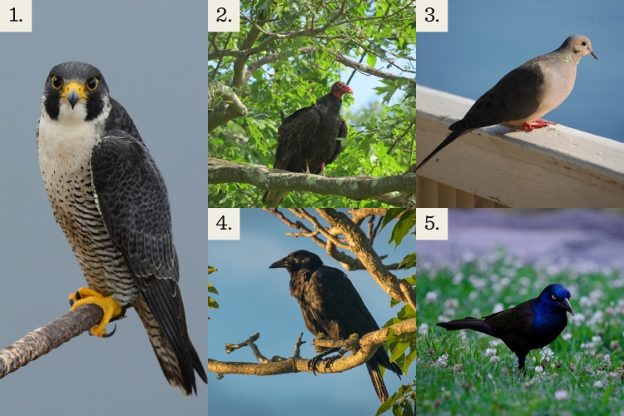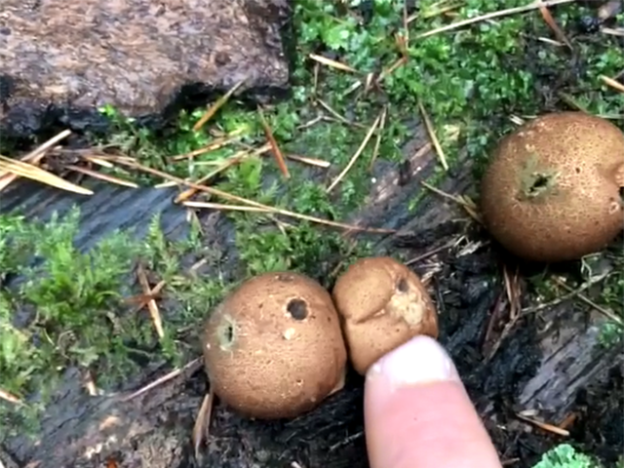While this year’s Bird-a-thon has shifted focus to birding closer to home and around your neighborhood, you can still find tons of exciting birds. Some birds are common in many habitats, like Northern Cardinals and American Robins, but here is a list of other feathered friends you are likely to see (or hear!) in habitats across Massachusetts along with some fun facts.
Urban • Suburban • Forest • Grassland/Fields • Wetland/Fresh Water • Coast
Urban
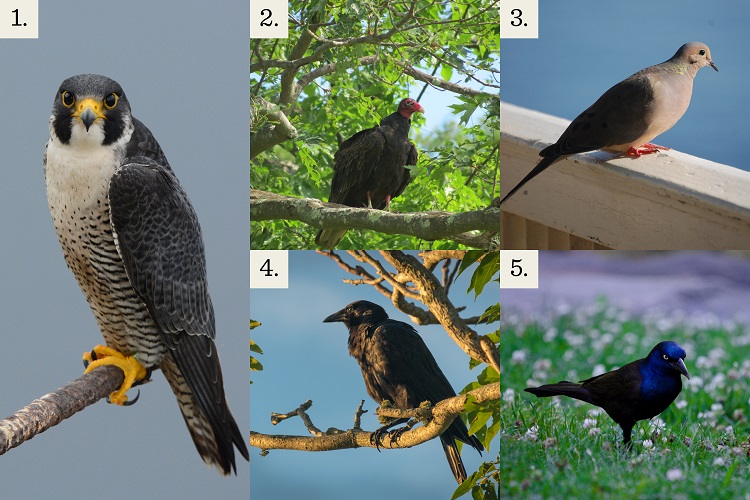
Peregrine Falcons (1) are found on all continents except Antarctica. They are also the fastest bird in the world!
Turkey Vultures (2) find their carrion meals by smell as well as sight. When threatened, a Turkey Vulture will projectile vomit to defend itself.
Mourning Doves (3) are known to make nests in odd places. A nest on top of an upside-down push broom leaning against a wall was once reported to our Wildlife Information Line.
American Crows (4) congregate in large numbers (sometimes up to a million birds or more!) to sleep together in the winter. One such roost has been common in Lawrence, MA.
If you look closely at a Common Grackle (5) in the sunlight, you’ll see that it has quite beautiful iridescent feathers.
Suburban
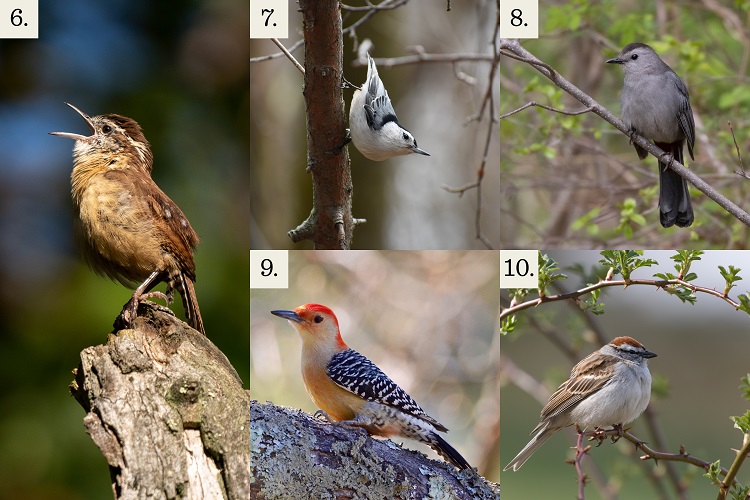
Carolina Wrens (6) are also known to nest in odd places when living in suburban areas, like in an old boot, or in a mailbox.
White-breasted Nuthatches (7), like other nuthatches, can move head-first down tree trunks and are frequently seen in that upside-down pose.
The Gray Catbird’s (8) song may last up to 10 minutes.
Sometimes, Red-bellied Woodpeckers (9) wedge large nuts into bark crevices, then whack them into smaller pieces using their beaks. They also use cracks in trees and fence posts to store food for later in the year.
In 1929, Edward Forbush (MA ornithologist) described the Chipping Sparrow (10) as “the little brown-capped pensioner of the dooryard and lawn, that comes about farmhouse doors to glean crumbs shaken from the tablecloth by thrifty housewives.”
Forest
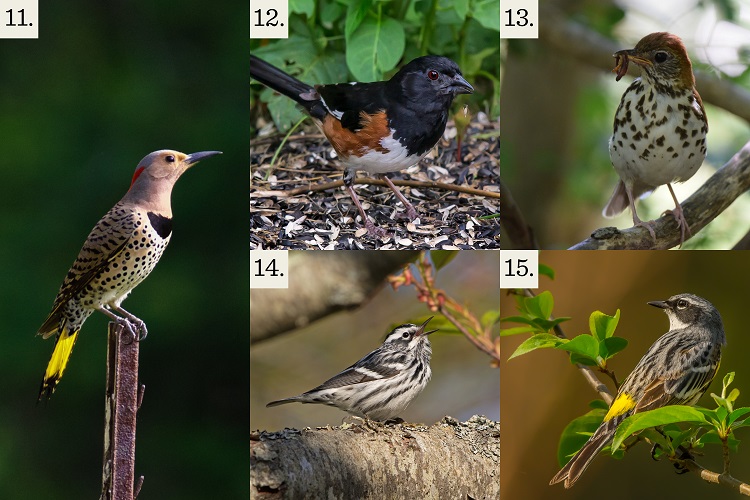
Although they can climb trees and hammer like other woodpeckers, Northern Flickers (11) prefer to find food, like ants, on the ground.
The Eastern Towhee’s (12) song sounds like they are saying “drink-your-tea.”
Wood Thrush (13) can sing two parts at once. In the final trilling phrase of their three-part song, they sing pairs of notes simultaneously, one in each branch of its y-shaped voicebox. The two parts harmonize to produce a haunting, ventriloquial sound.
The scientific name for Black-and-white Warblers (14) is Mniotilta varia meaning “moss-plucking,” after their habit of probing bark and moss for insects.
The yellow patch just above the Yellow-rumped Warbler‘s (15) tail gives them the nickname “butter butts.”
Grassland or Open Field
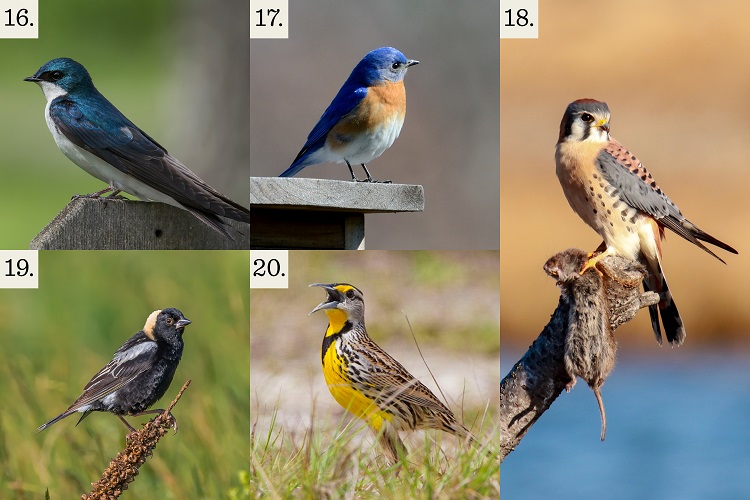
Tree Swallows (16) are one of the best-studied bird species in North America, helping researchers make major advances in several branches of ecology. Despite this, we still know little about their lives during migration and winter.
Eastern Bluebirds (17) typically have more than one successful brood per year. Young born in early nests usually leave their parents in summer, but young from later nests frequently stay with their parents over winter.
American Kestrels (18) can see ultraviolet light, which allows them to see the urine trails that voles leave as they run along the ground. These bright paths help kestrels find prey.
Bobolink (19) songs sound like R2D2’s voice from Star Wars.
Male Eastern Meadowlarks (20) can sing several variations of its song. Scientists analyzed one male meadowlark and found he sang more than 100 different song patterns.
Wetland or Freshwater Pond, Lake or River
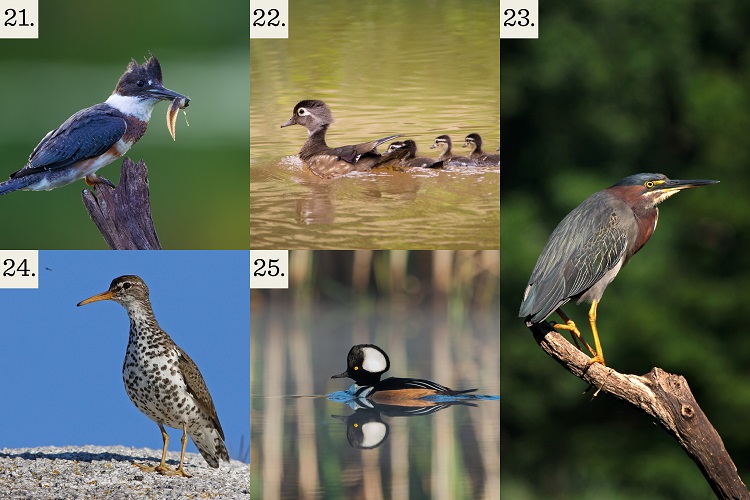
Fossils of Belted Kingfishers (21) dated to 600,000 years old have been found in Florida, Virginia, Tennessee, and Texas.
Wood Ducks (22) nest in trees ranging from directly over water to over a mile away. After hatching, the ducklings jump down from the nest tree and make their way to water. The mother calls them to her but does not help them in any way. Ducklings may jump over 50 feet without injury.
Green Herons (23) are one of the world’s few bird species who use tools. They often create fishing lures with bread crusts, insects, and feathers, dropping them on the surface of the water to attract small fish.
Unlike most birds, Spotted Sandpiper (24) females establish and defend the territory, arriving to the breeding grounds before males. Males then take the primary role in parental care, incubating the eggs and caring for chicks.
Hooded Mergansers (25) find their prey underwater by sight. They can actually change the refraction properties of their eyes to improve their underwater vision. Plus, birds have an extra eyelid called a “nictitating membrane,” which is transparent and helps protect their eyes while swimming, like a pair of goggles.
Coast and Saltmarsh
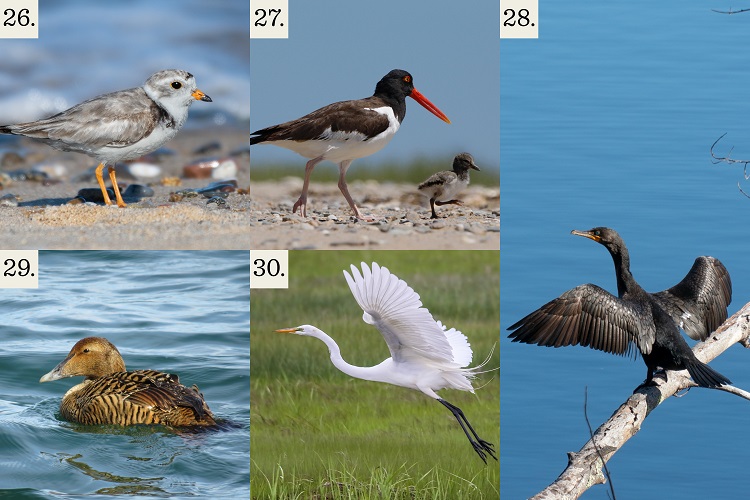
Piping Plovers (26) will sometime use a foraging method called foot-trembling where they extend one foot out into wet sand and vibrate it to scare up food like marine worms, insects, and crustaceans.
Unlike most shorebirds, American Oystercatcher (27) chicks depend on their parents for food for at least 60 days after hatching.
Double-crested Cormorants (28) often stand in the sun with their wings outstretched to dry. Cormorants have less oil on their feathers so their feathers can get soaked rather than shedding water like a duck. Having wet feathers probably make it easier for cormorant to hunt underwater.
Common Eider (29) mothers and chicks form groups called “creches” that can include over 150 chicks and include non-breeding hens as protection.
During the Great Egrets (30) breeding season, a patch of skin on its face turns neon green and long feathers called aigrettes grow from its back. These feathers were prized for ladies’ hats in the 19th century and inspired Harriet Lawrence Hemenway and Minna B. Hall to form Mass Audubon to protect them.
Ready to start birding?
Get involved at massaudubon.org/birdathon


